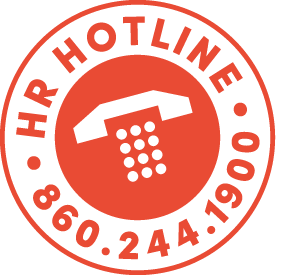HR Hotline: Layoffs? Furloughs? Shared Work?

Q: Is there a difference between a furlough or the shared work program offered by the state?
What is the most economically viable option for small non-essential businesses that plan to bring employees back full time but cannot keep them employed during the executive order?

A: “Layoff” and “furlough” are often used interchangeably, or with intent to mean different things, but just what that difference is is often unclear.
Layoff is typically used when the separation from employment is intended/expected to be permanent, or long term.
Furlough is often used when it’s expected to be a short-term interruption in work of a few weeks, or even months, but there’s an expectation of rehire.
Other elements of a furlough may include preservation of seniority, PTO accruals, and some assistance with group benefits premiums, continuing coverage with the employer contributing the same active employee rate, more or less.
In some cases, employers are paying the full premium with no expectation of employee contribution, or an understanding that the employee contribution will be made up with an increased payroll deduction upon rehire.
Unemployment Eligibility
For unemployment eligibility purposes, using the terms layoff or furlough doesn’t matter, as unemployment benefits are awarded in lack of work situations such as these, and the state is being more liberal in this COVID-19 context, awarding benefits even where someone is not “available for work.”
Many workers are absent for their own health purposes, monitoring one’s health, or home with a child whose school is closed, all of which in the past would have disqualified the employee from unemployment because they’re not available for work.
When no work is available at all, full unemployment benefits may be the best financial safety net.
The Connecticut Department of Labor’s Shared Work program has proven to be an effective strategy to get through a period of reduced work/hours while maximizing employee income via wage for time worked supplemented by shared work unemployment benefits.
When no work is available at all, full unemployment benefits may be the most suitable financial safety net.
The above comments relative to sources of income replacement when no work is available assumes affected employees can’t work because a government order prevents work, or a company that shuts down for other reasons.
Expanded Sick Leave, FMLA
A complicating factor on the immediate horizon is the new federal Families First Coronavirus Response Act, just signed into law this past week with an April 2 effective date.
While we are still digesting the fine points of this expansion of the federal FMLA law, workers will be entitled to new job protected leave time and pay for some of that leave time when their absence is:
- Due to childcare responsibilities because of school or childcare facilities closings, or
- When unable to work because the employee or someone they are caring for is subject to a governmental quarantine or isolation order, has been advised by a healthcare provider to self-quarantine, or is experiencing symptoms of COVID-19 and is seeking a medical diagnosis.
In these paid leave situations covered by this new law, unemployment benefits will take a back seat until all mandated paid leave is exhausted.
The one bright spot to the obligation to continue wages under these paid leave mandates is that employers will be able to recover the costs via tax credits, assuming there are further payrolls that include payroll taxes to recover.
The IRS has also issued some preliminary guidance on the basics of the law, including links to more detailed information on the tax credits available for employers to recover the costs of the paid leave mandates.
HR problems? Email or call Mark Soycher at the HR Hotline (860.244.1900) | @HRHotline
RELATED
EXPLORE BY CATEGORY
Stay Connected with CBIA News Digests
The latest news and information delivered directly to your inbox.


